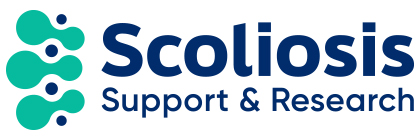Lead Researchers:
Dr Catherine Baker
Mr Thanos Tsirikos
Institutions:
Birmingham City University
Royal Hospital for Sick Children Edinburgh
Aims:
To use art as a form of interdisciplinary research practice to measure the impact of Adolescent Idiopathic Scoliosis on wellbeing and body perception. The research aims to contribute to a better understanding of alternative treatments towards improving quality of life in young females, advancing two of the twelve key scoliosis research priorities as laid out in the Scoliosis Priority Setting Partnership. These include: How is quality of life affected by scoliosis and its treatment? How can we measure this in ways that are meaningful to patients? How are the psychological impacts (including on body image) of diagnosis and treatment best managed?
Summary:
Research conducted by Baker (2013-15) with three teenage girls diagnosed with AIS found that they were able to positively articulate their condition using images of tree growth. Building on these findings this pilot research project proposes that 12 female participants from the NHS Lothian Region will be recruited via the patient-base of Mr. Tsirikos. Including both pre and post-operative AIS patients the participants will attend two Interdisciplinary creative practice workshops joined on one occasion by their families.
The workshops will be delivered in two phases, phase one will involve the participants being joined by their families with phase two centring on the female participants.
Phase 1 involves a weekend-based family workshop using qualitative research methods at The Royal Botanic Gardens Edinburgh. Based on a family unit of 4, 48 individuals will take part in Phase 1.
The workshops will explore the aesthetics of imperfection and their cultural value through material investigations that focus on the body as both an object and how it is experienced using the metaphor of tree images. By drawing parallels between the growth patterns of trees that, for complex and often unknown reasons, have grown unexpectedly the team will explore questions around ideological notions of perfect growth through art making.
Uniquely, the interdisciplinary team will draw upon insights from across the combined disciplines, thinking across boundaries to evoke different ways of knowing and understanding the complexities of body perception through image making. The full team consists of primary investigators; Dr Catherine Baker, Associate Professor Interdisciplinary Practice (Birmingham City University), Mr Thanos Tsirikos (NHS Lothian), and Co-investigators; Dr Nina Morris, Senior Lecturer Human Geography (University of Edinburgh), and Dr Olga Fotakopoulou, Senior Lecturer Developmental Psychology (Birmingham City University).
Photography will be employed, in the botanic grounds, by artist, Baker and human geographer, Morris, as a participatory strategy to explore sensory perception and human/nature relationships. Concurrent focus groups, run by Fotakopoulou and Tsirikos will cover participants’ feelings, experiences, attitudes towards their diagnosis and body image, drawing on the agency of the creative artefacts produced.
The workshops tailored directly at the AIS participants, are based on research findings that dissatisfaction with body-image is not only common amongst adolescents but, that active social media engagement has been shown to exacerbate the extent to which young women compare themselves physically to others (Smith 2014).
The workshops will focus on deconstructing digital image making using photographic artefacts developed by Baker. Together with the participants she will explore the techniques commonly used to falsify body images that proliferate social media platforms: focusing on investigating the negative impacts of such images. The digital and analogue processes employed will empower participants to develop outward-facing artefacts that visually articulate their experience of AIS through a process of valuing.
Established Appearance and Body Image Disturbance Questionnaires will be used to gather objective analytical data plus empirical data from transcripts and artefacts will be evaluatively reviewed for its broader contribution to medical-humanities research. The outcomes will contribute to the development of new ideas around the management of, and associated treatments for, AIS and pioneer the delivery of a novel creative-practice project driven towards advancing the best treatments for this often poorly understood condition.
